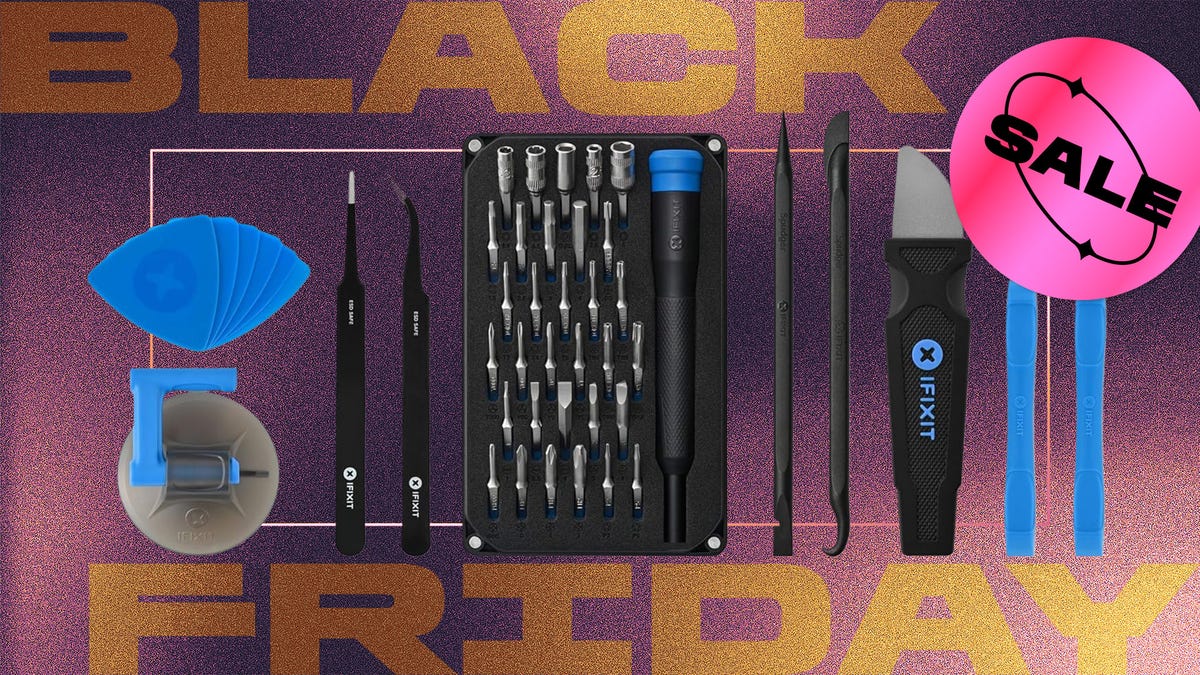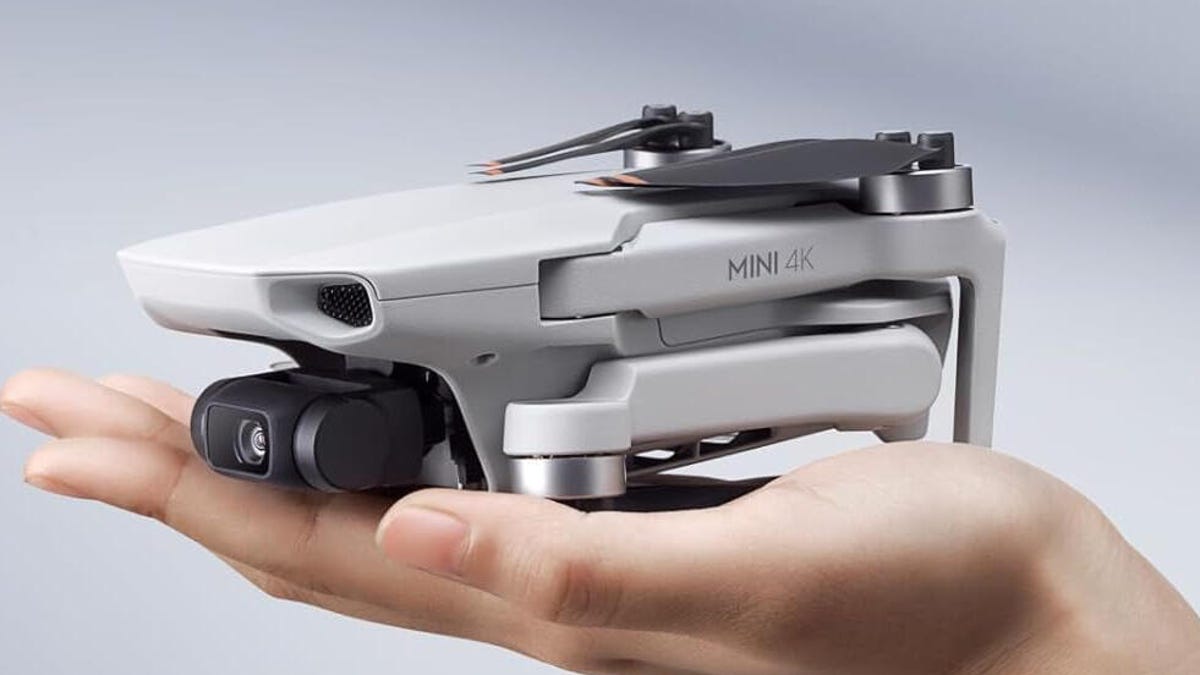Technologies
Best Road Trip Camera Gear
Want to document your next road trip? Here’s the gear we recommend.

Whether you’re planning a once-in-a-lifetime experience, an epic road trip across the United States, or just a quiet weekend getaway, you’ll want the best camera to document your adventure. The right camera can elevate your photos and videos with higher quality, amazing slow-motion footage and, most especially, rugged waterproofing so your phone stays safely in your pocket. You don’t need to spend a fortune on high-end cameras either. Often a GoPro can do the trick.
I travel a lot, and I’ll be the first to admit I bring more camera gear than I need to. However, there are only a few I used all the time, and those are what I recommend here. One of them will probably be all you need for your next road trip.
Óscar Gutiérrez/CNET
You can’t go wrong with a GoPro. They have excellent image quality, are quite rugged and their app is pretty solid in letting you edit your photos and footage to look its best. The main reason I’m recommending the Hero 10 over one of the less expensive options is because of the Max Lens Mod. This lens swaps in and records an even wider angle of view. Plus, it improves the already excellent stabilization.
I’ve been using it not only to capture scenic vistas, but also as a dash camera, as you can see in the video below.
The newer GoPro Hero 11 has a few improvements, but for most people the Hero 10 will look pretty much the same and will save you some money.
Insta360
I’ve used 360 cameras for years. They’ve come a long way. This is the first I’d consider using without a backup action camera. 360 cameras capture everything in a sphere around the camera. Later, with the app, you can pick and choose what to show and how. So basically you record everything, and then crop to show just the interesting parts.
One of the coolest tricks a 360 camera can do is automatically remove the selfie stick, so it looks like you have a drone following you. For more, check out:
Insta360 X3 Action Cam Uses 5.7K 360 Video, AI Smarts to Get All the Social Shots.
This is a unique and tiny action camera that I’ve been using a lot. It’s not really a main camera, but definitely an excellent secondary camera. It’s about the size of your thumb — and magnetic. You can hang it on your shirt while wearing an included magnetic pendant, or attach it to anything metal, or use one of the myriad clever mounts. The case that recharges and controls the camera even has a built-in tripod. The footage is wonderfully stabilized and looks far better than you’d expect for something so small.
Because of its size, it can record perspectives other cameras can’t, like the model train POV in the video below.
Josh Goldman/CNET
For most people the GoPro Hero 10 Black is all the action camera they’ll need. If you don’t mind spending a bit more, the newer Hero 11 improves on the 10 in a few minor ways. For one, there’s a new image sensor. The primary difference is it’s more square. So if you often post vertical content for, say, TikTok or Instagram, but still want to be able to post standard horizontal content to YouTube, this allows you to more easily do both without a significant loss in quality.
You can read more about it here:
GoPro Hero 11 Black Hands-On: A Super-Sized Sensor Adds Value for Everyone.
DJI
If you don’t want to invest in a new camera, or don’t want the bulk of one (fair), consider a gimbal. You can really improve the quality of your videos with a gimbal. They smooth out your hand’s movements while you’re walking around, and can do slick, professional-looking pans and tilts. They’re an absolute must-have if you’re primarily using your phone. I have the OM 3, but the 5 is the current model and is easier to connect to your phone.
Sarah Tew/CNET
If you’re recording a lot of video, your camera and phone’s storage are going to fill up fast. Cloud storage is one option, but if you’re bringing a laptop, consider a tiny portable hard drive. I have one of these and they seem impossibly small for how much they can store. They’re also reasonably rugged.
Selfie stick
I don’t have a strong recommendation for this one, other than to say selfie sticks are great (when you’re not in crowds, that is) and you should find one you like. Even I, who has what one friend describes as «freakishly long arms,» find great use in a selfie stick. They let me capture photos and videos that would be impossible any other way, especially with a 360 camera that automatically deletes the stick from the final image or video.


Precariously perched over the Badlands, thanks to a 360 camera and a selfie stick.
Geoffrey Morrison/CNETI recommend getting one with tripod-mount screws on both ends, which gives you more options on what you can mount and how you can mount the stick itself. Similarly, make sure you get one that can hold all your cameras and phones.
Camera remote
I find these to be super handy, though depending how you’re recording, it might not be. It’s a simple Bluetooth remote that lets you control when the camera starts and stops recording along with changing modes, settings, and so on. True, you can use the camera’s app on your phone instead, but I feel like I spend half my life trying to get cameras to connect to their apps, so sometimes a remote is easier. Sometimes the remote won’t connect either. It’s a hassle either way. Oh well.


Tripods and other mounts
One last thing. Tripods and mounts. You probably don’t need a full-size tripod, few people do. A small bendable model can be super handy though, letting you mount the camera to just about anything and get a great shot with you in it. I’ve had good luck with Joby GorillaPods. I have an older version of this one.
Also check out suction-cup and dash mounts. I have a tiny dashboard and tiny windshield, so it was a lot harder to find something that worked. So what I’m using probably won’t work for you. Generally I’d recommend mounting the camera as high as possible, if you can, for a better view.
I’ll end with my favorite, an antenna mount. Unscrew your antenna and install this mount. When paired with a 360 camera, it lets you get an exciting and unique view of your adventure. I got one of these and put a selfie stick on top of it, plus a 360 camera, to get the drone-like footage of me and my car in Grand Teton National Park. How well this works is going to depend on your particular vehicle, however.
Read more: Best Tripod for Photography and Video in 2023
As well as covering TV and other display tech, Geoff does photo tours of cool museums and locations around the world, including nuclear submarines, massive aircraft carriers, medieval castles, epic 10,000-mile road trips, and more. Check out Tech Treks for all his tours and adventures.
He wrote a bestselling sci-fi novel about city-size submarines and a sequel. You can follow his adventures on Instagram and his YouTube channel.
Technologies
Repair Your Electronics at Home With This Rare Black Friday Discount on the iFixit Pro Tech Go Toolkit
This toolkit rarely goes on sale, so take advantage of this opportunity to snag it for only $40.

While Black Friday is an excellent time to replace old smartphones or broken laptops at a discount, not everyone is looking to splurge on new tech right now. If you’re shopping on a budget, or simply like the devices that you have and aren’t ready for an upgrade, investing in an electronics repair kit may be a wise option. We’ve spotted a discount on the iFixit Pro Tech Go tech toolkit, bringing its price down to just $40. But don’t delay, Black Friday is in its final hours and this kit rarely goes on sale.
The iFixit Pro Tech Go kit can be used to open up and repair a wide range of electronics, including smartphones, laptops, gaming consoles, and smart home devices for DIY repairs like battery or screen replacements. The kit has a 32-bit Moray driver kit, an opening tool, a suction handle, a jimmy, a spudger and angled tweezer to carefully open your devices.
Don’t miss any of our unbiased tech content and lab-based reviews. Add CNET as a preferred Google source.
Repairing your own tech can save you hundreds or even thousands of dollars. It also reduces e-waste by helping your devices last longer rather than throwing them away over minor issue. As of this year, all 50 states have introduced right-to-repair legislation designed to give people a legal right to fix their own tech, and several states have already signed it into law.
You can check out more deals from iFixIt now on Amazon. Plus, for other budget buys, check out our roundup of the best Black Friday deals under $100.
MOBILE DEALS OF THE WEEK
-
$749 (save $250)
-
$475 (save $175)
-
$499 (save $300)
-
$900 (save $400)
Why this deal matters
This is a record low price on a repair kit that rarely goes on sale. While we did see a modest discount on the iFixit Pro Tech Go toolkit during Amazon Prime Day in July, it was not marked down for October Prime Day or other sales such as Memorial Day or Labor Day. As such, it’s fairly unlikely that we’ll see it go on sale again this season, so this might be your last chance to get the toolkit for only $40.
Join Our Daily Deals Text Group!
Get hand-picked deals from CNET shopping experts straight to your phone.
By signing up, you confirm you are 16+ and agree to receive recurring marketing messages at the phone number provided. Consent is not a condition of purchase. Reply STOP to unsubscribe. Msg & data rates may apply. View our Privacy Policy and Terms of Use.
Technologies
Don’t Say Goodbye to Black Friday Yet. These Rare Apple Discounts Are Still Going Strong
Technologies
What a Ban Would Actually Mean for DJI Drone Owners and Holiday Shoppers
What’s the secret to a very un-merry shopping season? A brand new, unusable drone.

With Thanksgiving wrapped up and the Black Friday shopping sales here, if a DJI drone is on your holiday wish list, you might want to hit «buy» immediately. The company has issued a stark warning: Its drones could be banned from sale in the US, and the deadline is looming.
The Federal Communications Commission voted 3-0 at the end of October to «close loopholes» that allow tech deemed a «national security risk» to be sold in the US. In plain English, the US government is clearing the path to give DJI the same treatment it gave Chinese phone-maker Huawei, effectively banning its products from the American market.
The US government has deemed DJI, which is based in China, a security risk. It’s also considering a separate ban on TP-Link routers.
DJI is already sounding the alarm, posting on Instagram that a «deadline that could decide DJI’s fate in the US is just 43 days away» (now 19 days away). The company is warning that without an audit, its products could face an «automatic ban.» The US government has long labeled the Chinese drone maker a security risk, and it looks like the hammer might finally be coming down right before the holidays.
Don’t miss any of our unbiased tech content and lab-based reviews. Add CNET as a preferred Google source.
The vote isn’t the end of the road, however. Future bans would need to target specific products and would require a period of public consultation. But it appears the groundwork is being set for the FCC to block sales of future and some existing DJI drones from US shores, as well as products that use DJI technology.
The government has called for a DJI audit by the end of the year, but if that doesn’t happen, DJI drone products could be banned for sale by default under a national security law.
DJI asks for a security audit before any ban
A representative for DJI told CNET that while the FCC vote references a rule change that doesn’t currently apply to DJI specifically, the National Defense Authorization Act deadline in December would put Chinese companies like it on the FCC’s ban list, «without any evidence of wrongdoing or the right to appeal.»
Adam Welsh, head of global policy at DJI, said the company has repeatedly said it would be open to audit, but that «more than 10 months have now passed with no sign that the process has begun.»
«The US government has every right to strengthen national security measures, but this must go hand in hand with due process, fairness, and transparency,» Welsh said.
Welsh said DJI is urging the government to start the audit process or grant an extension.
Will DJI drone owners need to give them up?
Because the ban would apply to new sales, not drones that have already been sold, a DJI drone you already own would still be legal to use — at least under current rules.
Government agencies, however, are prohibited from purchasing or using drones from Chinese companies, including DJI.
DJI’s drones consistently rank high in their product category. In January, they dominated CNET’s list of best drones for 2025. But some of the company’s newest products, such as the DJI Mavic 4 Pro, haven’t been available for sale in the United States.
Even DJI products that are not yet banned may be hard to find. The website UAV Coach has posted a guide to the bans and reports that, due to inventory issues, most DJI drone models are sold out at retailers regardless of future FCC action.
-

 Technologies3 года ago
Technologies3 года agoTech Companies Need to Be Held Accountable for Security, Experts Say
-

 Technologies3 года ago
Technologies3 года agoBest Handheld Game Console in 2023
-

 Technologies3 года ago
Technologies3 года agoTighten Up Your VR Game With the Best Head Straps for Quest 2
-

 Technologies4 года ago
Technologies4 года agoBlack Friday 2021: The best deals on TVs, headphones, kitchenware, and more
-

 Technologies4 года ago
Technologies4 года agoVerum, Wickr and Threema: next generation secured messengers
-

 Technologies4 года ago
Technologies4 года agoGoogle to require vaccinations as Silicon Valley rethinks return-to-office policies
-

 Technologies4 года ago
Technologies4 года agoOlivia Harlan Dekker for Verum Messenger
-

 Technologies4 года ago
Technologies4 года agoiPhone 13 event: How to watch Apple’s big announcement tomorrow






